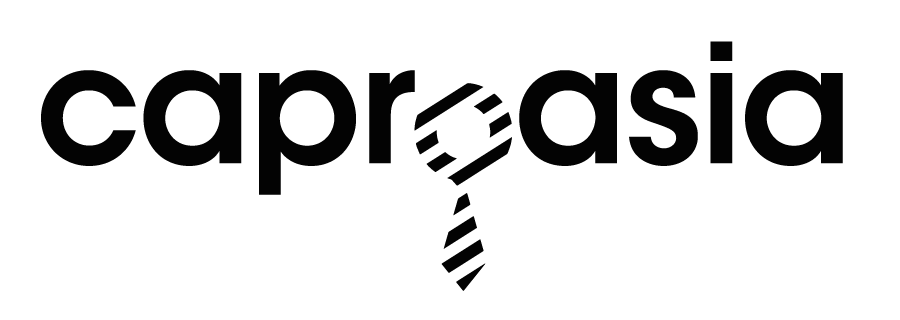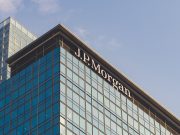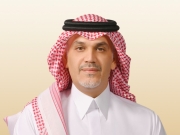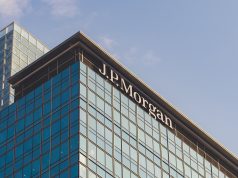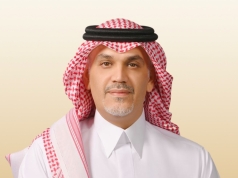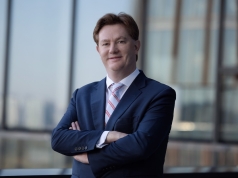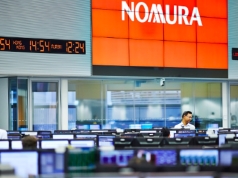AIMA Hedge Funds & Investors Report 2023: Average Hedge Fund Mgmt Fee at 1.39%, Principals & Employees Invested 8.01% of AUM, Top 3 Strategies of Flagship Funds are Long-Short Equity, Multi-Strategy & Private Credit
4th March 2023 | Hong Kong
The Alternative Investment Management Association (AIMA) has released the latest 2023 Hedge Fund research report on how hedge funds managers and investors align their interests, surveying 138 alternative investment fund managers with $707 billion AUM (Assets under Management) averaging $5 billion per fund manager and 35 institutional investors (More than 50% allocate more than $2 billion to alternatives, average allocation of $1.3 billion) in 2H 2022. In the research report, the top 3 strategies of the Hedge Fund flagship funds are Long-short equity (24%), Multi-strategy (14%), and Private credit (13%), with 61% managing more than $1 billion, and 25% managing $100 million to $1 billion. Hedge Funds Principals & Employees have personal capital of average 8.01% of AUM (Below $1 billion 9.33%, above $1 billion 6.95%). The top 3 ways Hedge Funds can align interests with investors are Skin in the Game (Personal Capital invested), Broader Skin in the Game (Investment Executives), and Greater Transparency. The top 3 ways for Relationship Management are to Generate returns for investors, Sticky investor (Dissuade investors from redeeming capital with access to new investments & better pricing for long-term investors), Knowledge sharing (Trade ideas & market insights). The Hedge fund average annual management fee in 2022 is 1.39%, compared to 1.3% in 2019. Increase in hedge fund fees – Global Macro, Long-short Equity, Multi-Strategy. Decrease in hedge fund fees – Event Driven. Top 3 Investor considerations on negotiating fees – Fees are aligned with the operating costs of the firm, Lower management fee with higher performance fee, Fund provides tiered management fee rates. Hedge funds to forgo all management fees for higher performance fee – Not feasible (35%), Reduce management fee (30%), Prepared to consider this option (20%), Yes (13%), Yes, but pass more expenses to the fund (2%). Fund Managers on Responsible Investment – ESG factors (69%), Negatively screening (26%), Impact Investing (20%), Green Bonds (9%), Funds with UNPRI Signatories (6%), Not doing Responsible Investment (29%). Top 3 Challenges for ESG investments – Not relevant to our strategy or mandate (52%), Lack of quality / consistent sustainability data (34%), Confusion over industry ESG terminology (13%). Hedge fund provides co-investment opportunities to investors – No (44%), Not currently but would consider (27%), Yes & only to existing investors (13%), Yes (10%), Not currently but actively pursuing how to do this (6%). The 2023 Hedge Fund Report is titled “In Sync – How hedge funds achieve alignment with investors to foster long-term strategic partnerships.” View the AIMA Hedge Fund & Investors Report 2023 here
“ Average Hedge Fund Mgmt Fee at 1.39%, Principals & Employees Invested 8.01% of AUM, Top 3 Strategies of Flagship Funds are Long-Short Equity, Multi-Strategy & Private Credit “
The 2023 Hedge Fund Report is titled “In Sync – How hedge funds achieve alignment with investors to foster long-term strategic partnerships”. The Alternative Investment Management Association (AIMA) published the research report in partnership with RSM International into the evolving relationships of fund managers and their investors to investigate to what extent they align interests for mutual benefit. RSM International is a leading provider of professional services to the middle market, and is the 6th largest global network of independent assurance, tax & consulting firms.
Tom Kehoe, Global Head of Research and Communications at AIMA,: “This report represents our latest exploration into the manager-investor dynamic that underpins hedge funds. We find that the evolving relationship has brought about significant changes that impact the overall industry since we last reviewed this relationship in 2019. Through more flexible fee models, new products, value advisory services, as well as greater transparency and knowledge sharing, our analysis reveals a more strategic partnership that results in a deeper alignment of interests between both parties.”
Jonathan Waterman, National Asset Management Leader at RSM US LLP: “We couldn’t be more excited to present ‘In Sync,’ which is our third publication collaborating with AIMA on trends in the asset management industry. While some metrics are similar to our prior publication results in 2016 and 2019, certain trends have formed that show how much the industry has evolved over the past nine years, especially coming out of the pandemic.”
Tessie Shih, Director of Investor Relations at CFM and Chair of AIMA’s Research Committee: “This report offers a timely update on how fund managers are adapting their offering to best align their interests with those of their investors in today’s fluid market environment. For fund managers, the alternative investment space is more competitive than ever when it comes to securing allocations from investors and it is important to employ a wide range of tools to stay ahead.
“This report covers everything from fee models to transparency and knowledge-sharing best practices, through to ESG and bespoke products. At its core, both the data and the case studies presented in the report reinforce the point that a successful manager-investor relationship must be viewed as a close partnership where both parties are progressing in the same direction for mutual gain.”
AIMA Hedge Funds & Investors Report 2023

The Alternative Investment Management Association (AIMA) has released the latest 2023 Hedge Fund & Investors research report on how hedge funds managers and investors align their interests, surveying 138 alternative investment fund managers with $707 billion AUM (Assets under Management) averaging $5 billion per fund manager and 35 institutional investors (More than 50% allocate more than $2 billion to alternatives, average allocation of $1.3 billion) in 2H 2022. The 2023 Hedge Fund Report is titled “In Sync – How hedge funds achieve alignment with investors to foster long-term strategic partnerships”
AIMA Hedge Funds & Investors Report 2023
Key Summary
- Top 3 Strategies of Flagship Funds – Long-short equity (24%), Multi-strategy (14%), Private credit (13%)
- Hedge Fund AUM Profile – 61% manage more than $1 billion, 25% manage $100 million to $1 billion
- Invested in Alternative Investment Funds – 54% invests more than $2 billion
- Hedge Funds Principals & Employees Personal Capital in Fund – Average 8.01% of AUM
- Hedge Funds with more than $1 billion – 6.95% of AUM (Principals & Employees Personal Capital)
- Hedge Funds with less than $1 billion – 9.33% of AUM (Principals & Employees Personal Capital)
- Top 3 Ways Hedge Funds align interests with investors – Skin in the Game (Personal Capital invested), Broader Skin in the Game (Investment Executives), Greater Transparency
- Top 3 Considerations on Transparency – Revealing fund strategy’s IP (secret sauce), Costs from additional reporting, Risk of fund principals & employees away from trading desks
- Top 5 Hedge Funds terms to increase alignment of interests in 2019 – Greater transparency of the fund, Customised solutions, Tiered management fees, Fund hurdle rates, Longer fee crystallisation period
- Top 5 Hedge Funds terms to increase alignment of interests in 2022 – Greater transparency of the fund, Customised solutions, Fund hurdle rates, Preferential fee terms, Offer investors co-investment opportunities
- Top 3 Ways for Relationship Management – Generate returns for investors, Sticky investor (Dissuade investors from redeeming capital with access to new investments & better pricing for long-term investors), Knowledge sharing (Trade ideas & market insights)
- Hedge fund provides co-investment opportunities to investors – No (44%), Not currently but would consider (27%), Yes & only to existing investors (13%), Yes (10%), Not currently but actively pursuing how to do this (6%)
- Fund Managers on ESG implementation – 79% implemented, in progress or raising awareness
- Fund Managers on Responsible Investment – ESG factors (69%), Negatively screening (26%), Impact Investing (20%), Green Bonds (9%), Funds with UNPRI Signatories (6%), Not doing Responsible Investment (29%)
- Top 3 Challenges for ESG investments – Not relevant to our strategy or mandate (52%), Lack of quality / consistent sustainability data (34%), Confusion over industry ESG terminology (13%)
Summary – Management Fees
- Hedge fund average management fee in 2022 – 1.39% vs 1.3% (2019)
- Increase in hedge fund fees – Global Macro, Long-short Equity, Multi-Strategy
- Decrease in hedge fund fees – Event Driven
- Flagship Fund Mgmt Fee with AUM less than $100 million – 1.18%
- Flagship Fund Mgmt Fee with AUM $100 million to $1 billion – 1.46% to 1.57%
- Flagship Fund Mgmt Fee with AUM $1 billion to more than $20 billion – 1.37% to 1.41%
- Hedge Fund Fee Structures – Management fee, Performance fee, High watermark, Multi-year rolling high watermark, Hurdle rates
- Top 3 Investor considerations on negotiating fees – Fees are aligned with the operating costs of the firm, Lower management fee with higher performance fee, Fund provides tiered management fee rates
- Hedge funds to forgo all management fees for higher performance fee – Not feasible (35%), Reduce management fee (30%), Prepared to consider this option (20%), Yes (13%), Yes, but pass more expenses to the fund (2%)
- Top 5 Hedge Fund Expenses fund “pass through” to investors – Fund expenses (87%), Service provider costs (85%), Operational costs (75%), Payment for research (33%), Operating expenses (24%)
1) Hedge Funds Profile
Primary Strategy of Flagship Fund
- Long-short equity – 24%
- Multi-strategy – 14%
- Private credit – 13%
- Others – 10%
- Global macro – 8%
- Event driven – 7%
- CTA/Managed futures – 6%
- Long only – 5%
- Fund of funds – 5%
- Long-short credits – 5%
- Digital assets – 1%
- Equity market neutral quant – 1%
Hedge Fund Net AUM:
- More than $20 billion – 11%
- $10 billion to $19.9 billion – 5%
- $5 billion to $9.9 billion – 16%
- $1 billion to $4.9 billion – 29%
- $500 milllion to $999 million – 6%
- $250 million to $499 million – 8%
- $100 million to $249 million – 11%
- Less than $100 million – 15%
Findings:
- 61% manage more than $1 billion
- 45% manage $1 billion to $10 billion
- 25% manage $100 million to $1 billion
Capital Invested in Alternative Investment Funds
- $1 million to $100 million – 9%
- $101 million to $250 million – 17%
- $251 million to $500 million – 9%
- $501 million to $1 billion – 9%
- $1 billion to $2 billion – 3%
- More than $2 billion – 54%
2) Hedge Funds – Principals & Employees Personal Capital in Fund
Hedge Fund Principals & Employees Personal Investment (% AUM)
- Hedge Funds with more than $1 billion – 6.95% of AUM
- Hedge Funds with less than $1 billion – 9.33% of AUM
- Hedge Funds – Average 8.01% of AUM
AUM Breakdown – Principals & Employees Personal Investment (% AUM)
- Less than $100 million – 11% of AUM
- $100 million to $249 million – 10.68% of AUM
- $250 million to $499 million – 7.45% of AUM
- $500 million to $999 million – 6% of AUM
- $1 billion to $4.9 billion – 5.58% of AUM
- $5 billion to $9.9 billion – 6.86% of AUM
- $10 billion to $19.9 billion – 6.38% of AUM
- More than $20 billion – 7.5% of AUM
3) Aligning Hedge Funds & Investor Interests
How Hedge Funds align interests with investors
- Skin in the Game – More than 75% of fund managers have significant investment in the funds
- Broader Skin in the Game – Key investment executives invest in the funds (signal intention of key investment experts to remain in the hedge fund, intensifying competition for talent)
- Greater Transparency – Transparency (Portfolio & Business) to assure investors hedge funds & their interests are aligned. Regular interactions with investors including by investor relations team. Knowledge sharing & regular market insights.
Top 3 Considerations on Transparency
- Concerns on revealing fund strategy’s IP (secret sauce) resulting in unintentionally disadvantaging the fund’s investors.
- Costs from additional reporting
- Risk of fund principals & employees away from trading desks
2019 Terms offered from hedge fund to improve interest alignment with investors (2019 Survey)
- Greater transparency of the fund – 60%
- Customised solutions – 52%
- Tiered management fees – 47%
- Fund hurdle rates – 44%
- Longer fee crystallisation period – 38%
- Enhanced performance fee structures – 36%
- Preferential fee terms – 33%
- All of the above – 20%
- Offer investors co-investment opportunities – 16%
2022 Terms offered from hedge fund to improve interest alignment with investors (2022 Survey)
- Greater transparency of the fund – 70%
- Customised solutions – 53%
- Fund hurdle rates – 52%
- Preferential fee terms – 35%
- Offer investors co-investment opportunities – 31%
- Enhanced performance fee structures – 30%
- Tiered management fees – 24%
- Longer fee crystallisation period – 16%
- All of the above – 6%
- Other – 6%
Relationship Management
- Primary goal – Generate returns for investors
- Sticky investor – Dissuade investors from redeeming capital (access to new investments, better pricing for long-term investors)
- Knowledge sharing – Trade ideas & market insights
Relationship Management Strategies
- Sticky investors – 33%
- Knowledge sharing – 28%
- Cross-selling opportunities – 19%
- New product development – 20%
4) Hedge Fund Fee Structures
Fee Structures– Fund managers delivering outperformance for their clients over a sustained period are compensated for the fees (Costs of running business and performance is duly rewarded).
Standard Management Fee Charged by Flagship Fund (2022 vs 2019)
- Average Management Fee: 1.39% vs 1.3%
- Event Driven: 1.32% vs 1.5%
- Global Macro: 1.41% vs 1.12%
- Long-short Equity: 1.47% vs 1.35%
- Multi-Strategy: 1.4% vs 1.23%
- Private Credit: 1.35% (No data recorded for 2019)
- Larger than $1 billion AUM: 1.4% vs 1.33%
- Less than $1 billion AUM: 1.39% vs 1.64%
Overall management fee has increased for flagship fund from 2019 (1.3%) to 2022 (1.39%)
Increase:
- Long-short Equity: 1.47% vs 1.35%
- Global Macro: 1.41% vs 1.12%
- Multi-Strategy: 1.4% vs 1.23%
- Larger than $1 billion AUM: 1.4% vs 1.33%
Decrease:
- Event Driven: 1.32% vs 1.5%
Flagship Fund Standard Management Fee by AUM
- Less than $100 million – 1.18%
- $100 million to $249 million – 1.57%
- $250 million to $499 million – 1.39%
- $500 million to $999 million – 1.46%
- $1 billion to $4.9 billion – 1.41%
- $5 billion to $9.9 billion – 1.37%
- $10 billion to $19.9 billion – 1.39%
- More than $20 billion – 1.38%
AIMA – Typical fee structure employed by a hedge fund manager consists of (i) an annual management fee and (ii) a performance or incentive fee. The management fee represents a percentage of the AUM of the firm charged by the fund to manage the firm’s assets – including day-to-day operating expenses – while the performance fee represents the fund’s claim on a portion of the total profits earned by the fund’s investments.
- Management fee – Management fees vary across industry. Higher management fee may be charged depending on the sophistication of the investment strategy. and resources to implement. Some investment strategies demand continuous investment in technology &/or research & development costs.
- Performance fee – The main incentive of a performance fee is to give fund manager incentive to generate positive returns.
- High watermark – High watermark continues to be the dominant mechanism used by investors to help ensure fund managers only get compensated on any net new increases in the fund’s asset value. The high watermark can be calculated over the whole lifespan of the fund since inception (perpetual high watermark) or over a fixed duration of time (annual high watermark). In the latter case, the high watermark would be reset at the start of a new period.
- Multi-year rolling high watermark – Recent years have seen the emergence of a multi-year rolling high- watermark. Closer examination of the responses that have this arrangement are private credit funds, two thirds of which are smaller fund managers. Typically, credit cycles tend to occur over three years resulting in fund managers and investors structuring any performance-based fees to align with that objective (i.e., to have any performance be judged over the course of the credit cycle).
- Hurdle rates – Hurdle rates are being considered a prerequisite in any performance compensation arrangements between fund managers and their investors, especially with regard to any new fund launches. 1 in every 2 fund managers uses a hurdle rate, up from 1 in 3 in 2019 with larger managers tending to use them more than smaller fund managers.
Hedge fund using hurdle rates by AUM
- More than $1 billion AUM – 55% Yes / 45% No
- Less than $1 billion AUM – 41% Yes / 59% No
Hedge fund using hurdle rates by Strategy
- Event Driven – 38% Yes / 63% No
- Global Macro – 33% Yes / 67% No
- Long-short Equity – 43% Yes / 57% No
- Multi-Strategy – 36% Yes / 64% No
- Private Credit – 81% Yes / 19% No
Variations of Hurdle Rate – Benchmark, Target return, Alpha hurdle rate, Soft hurdle rate (% of all profits if benchmark met), Hard hurdle rate (Incentive fee only for returns above benchmark)
Catch-up Provision – Once a fund’s hurdle rate is reached, fund manager is entitled to catch-up on the fund’s return until it receives its full share of performance fees on the fund net profits. 1 in 3 fund managers have a catch-up provision set at 50% or greater which enables them to charge fees on the performance up to the hurdle rate. Among the more popular strategies that include this measure are private credit, multi- strategy and event driven funds.
How a catch-up provision works – A fund sets a hurdle rate at 4% and the fund returns 15%, the investor would only be allocated the first 4% of net profits of the fund. Assuming a 20% performance fee and a full catch-up provision, the fund manager will receive the next 1% of profits (i.e., 20% of the cumulative 5% return). The remaining 10% would then be allocated 80/20 between the investors and the fund manager respectively. Once the fund has fully ‘caught up’, any additional return would be allocated based on the typical 80/20 split between the investors and the fund manager.
Fund has a Claw-back agreement
- Yes – 16%
- No – 84%
Flagship fund Catch-up provision
- No Catch-up provision – 68%
- 100% Catch-up provision – 22%
- 80% Catch-up provision – 5%
- 50% Catch-up provision – 5%
Investor clawbacks – Allow investors to take back some of the previous performance fees paid in profitable years when the fund returns losses.
Crystallisation of fund managers fees – Investors further acknowledge that given certain investment strategies, and the investment horizon of the underlying positions in the fund(s), it does not always make sense to crystallise fees on an annual basis. Certain fund strategies can liquidate. the underlying positions in their fund more often (e.g. those that turnover their investment book regularly) while other strategies may invest with longer liquidity terms, making better sense to crystallise upon the maturity of an investment.
Longer lock-ups in exchange for lower fees – Increasingly investors are more open to locking up their capital in hedge funds. for longer periods in exchange for reduced fees. This can be a mutually beneficial arrangement between the hedge fund manager and its client(s). For example, the investor reduces the fee drag on performance, whilst the committed capital gives greater freedom to the fund manager who does not need to hold as much capital on hand to meet potential redemption requests. With longer lockups, investors benefit from illiquidity premiums as they surface across markets. This is particularly pertinent for investment strategies involving activism, distressed assets, or credit.
Investor considerations on negotiating fees
- Fees are aligned with the operating costs of the firm – 51%
- Lower management fee with higher performance fee – 49%
- Fund provides tiered management fee rates – 46%
- Fund management fees are reduced for longer lock-up periods and/or notice periods – 46%
- Fund offers lower fees to larger investors – 43%
- Founder share class pays a lower management fee – 43%
- All of the above – 11%
- Greater transparency of portfolio in return for higher management fee – 3%
Hedge funds to forgo all management fees for higher performance fee
- Not feasible – 35%
- Reduce management fee – 30%
- Prepared to consider this option – 20%
- Yes – 13%
- Yes, but pass more expenses to the fund – 2%
Minimum AUM level to start tiering fees
- $25 million AUM or higher – 21%
- $50 million AUM or higher – 19%
- $100 million AUM or higher – 21%
- $250 million AUM or higher – 10%
- Do not currently tier fees, but would consider – 24%
- Will not tier fees – 5%
Relationship Pricing – Relationship pricing tends to be practiced more by larger fund managers, with 50% of the largest fund manager respondents ($20 billion AUM) saying that they offer this to their investors.
5) Hedge Fund Expenses
Expenses fund can “pass through” to investors
- Fund expenses – 87%
- Service provider costs – 85%
- Operational costs – 75%
- Payment for research – 33%
- Operating expenses – 24%
- Alternative data sets – 18%
- Placement agents – 9%
- None of the above – 7%
Appropriate limit on operating expense passed through fund
- 0 to 25 bps – 52%
- 25 to 50 bps – 35%
- 50 to 100 bps – 10%
- 100 bps – 3%
Hedge fund provides co-investment opportunities to investors
- No – 44%
- Not currently but would consider – 27%
- Yes & only to existing investors – 13%
- Yes – 10%
- Not currently but actively pursuing how to do this – 6%
Hedge fund on co-investment opportunities to investors
- Co-investing with alternative investment funds – 54%
- No co-investment arrangements with alternative investment funds – 9%
- No co-investment arrangements with alternative investment funds, but actively pursuing opportunities – 11%
- No co-investment arrangements with alternative investment funds, but would consider – 26%
6) ESG & Responsible Investments
Fund Managers on ESG implementation lifecycle
- ESG implementation across the firm established – 26%
- ESG implementation in progress – 29%
- Raising awareness about ESG implementation – 24%
- No implementation to date – 21%
Fund Managers on Responsible Investment
- Invest in alternative investment funds that use ESG factors – 69%
- Invest in alternative investment funds that negatively screen companies – 26%
- Invest in alternative investment funds that pursue impact investing – 20%
- Invest in alternative investment funds that trade green bonds – 9%
- Select funds that are UNPRI signatories – 6%
- All of the above – 3%
- Not pursuing responsible investment mandates – 29%
Fund Managers Approach to Responsible Investing
- Using ESG factors to evaluate investment opportunities – 46%
- Negative screening of companies – 34%
- Direct engagement with companies on ESG issues – 27%
- Impact investing – 10%
- Green bonds – 7%
- Others – 2%
- N/A – Presently we have no ESG or RI policy – 34%
Biggest challenges for ESG investments
- Not relevant to our strategy or mandate – 52%
- Lack of quality/consistent sustainability data – 34%
- Confusion over industry ESG terminology – 13%
- Lack of quality investment opportunities – 1%
The 2023 Hedge Fund & Investors Report is titled “In Sync – How hedge funds achieve alignment with investors to foster long-term strategic partnerships”. The Alternative Investment Management Association (AIMA) published the research report in partnership with RSM International into the evolving relationships of fund managers and their investors to investigate to what extent they align interests for mutual benefit. RSM International is a leading provider of professional services to the middle market, and is the 6th largest global network of independent assurance, tax & consulting firms. View the AIMA Hedge Fund & Investors Report 2023 here
Methodology – The report is informed by 2 global market surveys. One of 138 alternative investment managers with an estimated aggregate of $707 billion in assets under management. The other includes the views of 35 institutional investors that allocate to alternative investment funds. Broken down by strategy, 25% of all fund managers surveyed are long-short equity managers, with 14% multi-strategy managers and 13% are private credit managers. Respondents are divided by size – Where we refer to larger managers, these include managers with more than $1 billion AUM and those with AUM of less than $1 billion are referred to as smaller managers. The fund manager survey is complemented by a separate survey of 35 institutional investors that allocate to alternative investment funds to get their perspectives on key opportunities for alignment of interests. More than half of these investors allocate more than $2 billion to alternative investment funds, while the average is $1.3 billion.
About AIMA
The Alternative Investment Management Association (AIMA) is the global representative of the alternative investment industry, with around 2,100 corporate members in over 60 countries. AIMA’s fund manager members collectively manage more than US$2.5 trillion in hedge fund and private credit assets. AIMA draws upon the expertise and diversity of its membership to provide leadership in industry initiatives such as advocacy, policy and regulatory engagement, educational programmes and sound practice guides. AIMA works to raise media and public awareness of the value of the industry. AIMA set up the Alternative Credit Council (ACC) to help firms focused in the private credit and direct lending space. The ACC currently represents over 250 members that manage US$600 billion of private credit assets globally.
AIMA is committed to developing skills and education standards and is a co-founder of the Chartered Alternative Investment Analyst designation (CAIA) – the first and only specialised educational standard for alternative investment specialists. AIMA is governed by its Council (Board of Directors). For more information visit aima.org.
About RSM
RSM is the leading provider of professional services to the middle market. As the sixth largest global network of independent assurance, tax and consulting firms, RSM operates in 120 countries, across 830 offices, with more than 57,000 people internationally. The Network’s global revenues are US $8 billion. As an integrated team, RSM shares skills, insight and resources, as well as a client-centric approach that’s based on a deep understanding of its clients’ businesses. This is how RSM fulfils its purpose to instill confidence in a world of change, empowering its clients and people to realise their full potential. RSM is a member of the Forum of Firms, with the shared objective to promote consistent and high-quality standards of financial and auditing practices worldwide. RSM is the brand used by a network of independent accounting and advisory firms each of which practices in its own right. RSM International Limited does not itself provide any accounting and advisory services. Member firms are driven by a common vision of providing high quality professional services, both in their domestic markets and in serving the international professional service needs of their client base. For more information, visit rsm.global.
Sign Up / Register
Caproasia Users
- Manage $20 million to $3 billion of assets
- Invest $3 million to $300 million
- Advise institutions, billionaires, UHNWs & HNWs
Caproasia Platforms | 11,000 Investors & Advisors
- Caproasia.com
- Caproasia Access
- Caproasia Events
- The Financial Centre | Find Services
- Membership
- Family Office Circle
- Professional Investor Circle
- Investor Relations Network
Monthly Roundtable & Networking
Family Office Programs
The 2024 Investment Day
- March 2024 - Hong Kong
- March 2024 - Singapore
- June 2024 - Hong Kong
- June 2024 - Singapore
- Sept 2024 - Hong Kong
- Sept 2024 - Singapore
- Visit: The Investment Day | Register: Click here
Caproasia Summits
- The Investment Summit
- The Private Wealth Summit
- The Family Office Summit
- The CEO & Entrepreneur Summit
- The Capital Markets Summit
- The ESG / Sustainable Investment Summit
